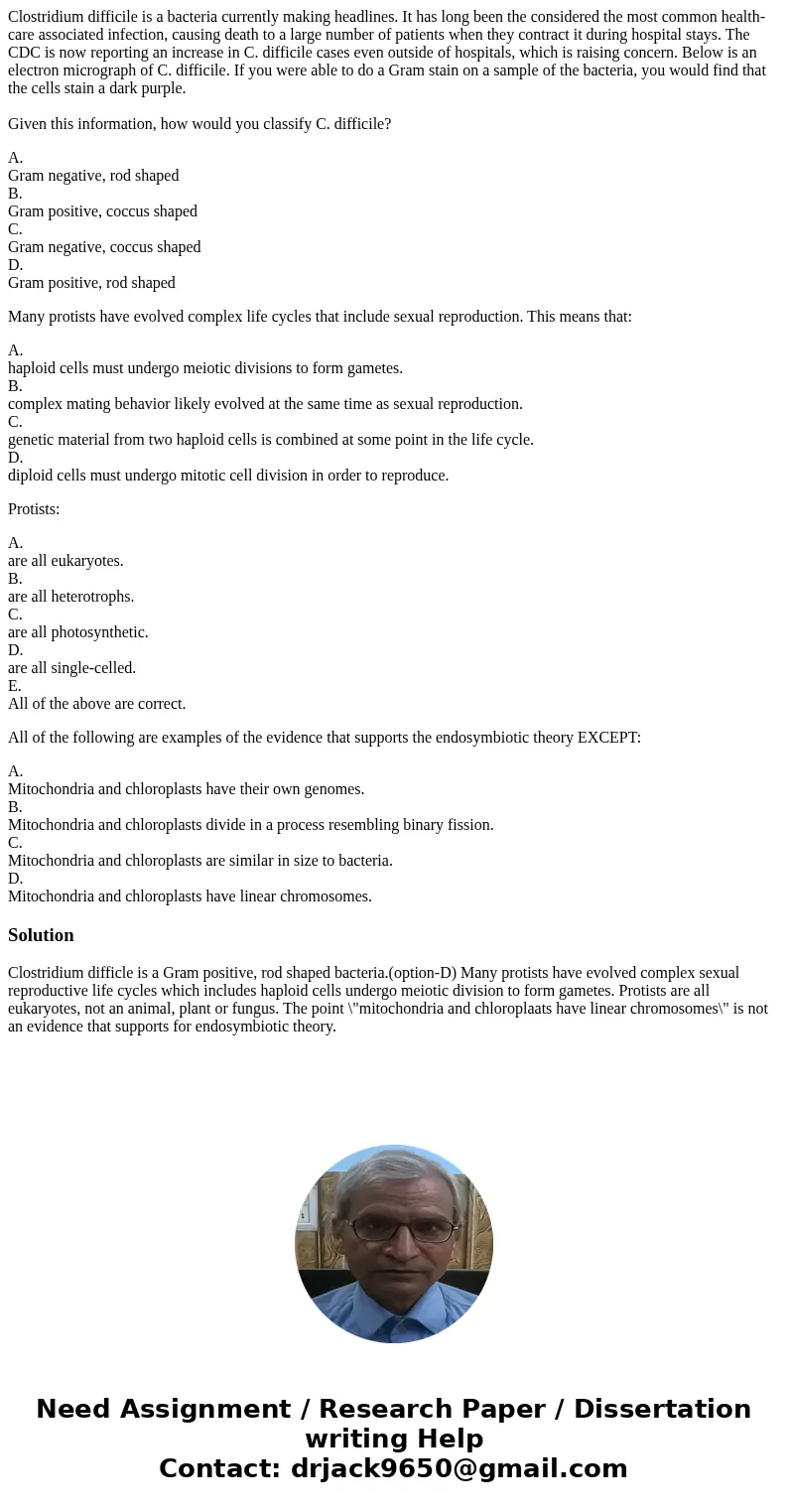Clostridium difficile is a bacteria currently making headlin
Clostridium difficile is a bacteria currently making headlines. It has long been the considered the most common health-care associated infection, causing death to a large number of patients when they contract it during hospital stays. The CDC is now reporting an increase in C. difficile cases even outside of hospitals, which is raising concern. Below is an electron micrograph of C. difficile. If you were able to do a Gram stain on a sample of the bacteria, you would find that the cells stain a dark purple.
Given this information, how would you classify C. difficile?
A.
Gram negative, rod shaped
B.
Gram positive, coccus shaped
C.
Gram negative, coccus shaped
D.
Gram positive, rod shaped
Many protists have evolved complex life cycles that include sexual reproduction. This means that:
A.
haploid cells must undergo meiotic divisions to form gametes.
B.
complex mating behavior likely evolved at the same time as sexual reproduction.
C.
genetic material from two haploid cells is combined at some point in the life cycle.
D.
diploid cells must undergo mitotic cell division in order to reproduce.
Protists:
A.
are all eukaryotes.
B.
are all heterotrophs.
C.
are all photosynthetic.
D.
are all single-celled.
E.
All of the above are correct.
All of the following are examples of the evidence that supports the endosymbiotic theory EXCEPT:
A.
Mitochondria and chloroplasts have their own genomes.
B.
Mitochondria and chloroplasts divide in a process resembling binary fission.
C.
Mitochondria and chloroplasts are similar in size to bacteria.
D.
Mitochondria and chloroplasts have linear chromosomes.
Solution
Clostridium difficle is a Gram positive, rod shaped bacteria.(option-D) Many protists have evolved complex sexual reproductive life cycles which includes haploid cells undergo meiotic division to form gametes. Protists are all eukaryotes, not an animal, plant or fungus. The point \"mitochondria and chloroplaats have linear chromosomes\" is not an evidence that supports for endosymbiotic theory.
 Homework Sourse
Homework Sourse